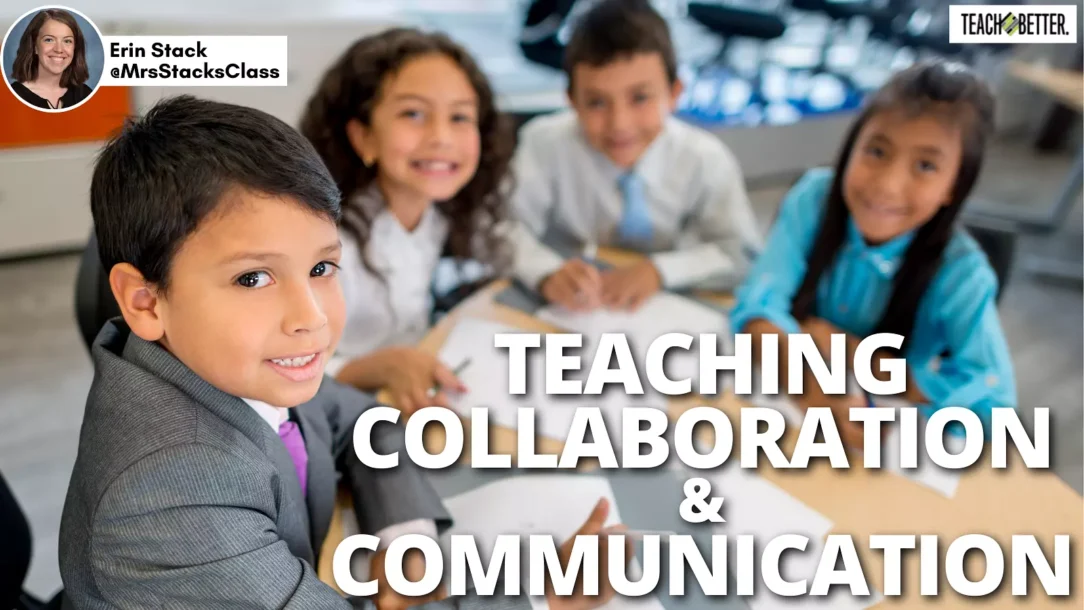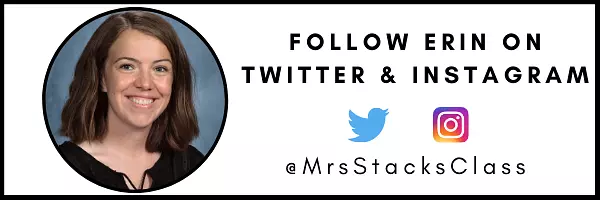TL;DR:
- How do students know if they’re doing a great job collaborating?
- Directly teach students what collaboration looks like.
- Share feedback with them throughout their class through glows and grows or a rubric.
- Embed practice into your lessons.
Prized Classroom Possession
My most prized classroom possession may not be what you’d assume. It’s not a document camera, SmartBoard, or other fancy piece of technology. It’s not even my pencil sharpener (although, I do love my pencil sharpener). The item is a stack of cards to provide my 8th grade students with feedback on their collaboration.
I inherited them my first year of teaching from a generous teacher who was leaving the classroom to pursue her doctorate. Here I am, 5 years later, still using them in my 8th grade science lessons! The cards are simple. Each card has a number at the top, one through four, and descriptions of what each number represents. The cards are used to give groups that are working together feedback on their collaboration in real-time. For example, the Four (Excellent) card reads:
Your group is doing all of the following:
- Answering and asking questions
- Working together
- On task, talking about the subject
- Listening to your teammates
- Being respectful
- Explaining your ideas
The reason this simple stack of cards is so valued is because it is a useful tool in teaching students collaboration and communication. And I think this is key. When teaching students how to collaborate, one 5-minute lecture will not help our students achieve the skills needed. Just like with our content, we need to provide students with modeled expectations for soft skills they will need throughout life. Along with this, time to practice, receive feedback, and reflect are also key.
Just as you model narrative writing using a mentor text, we need to model what effective communication and collaboration look like as well. Click To TweetStep 1: Model Expectations
When teaching a soft skill, we cannot expect students to know where to begin if they do not know the end goal. Just as you model narrative writing using a mentor text, we need to model what effective communication and collaboration look like as well. I believe this is especially important after the last two years our students have experienced. The majority of communication has solely been from behind computer screens and through email and chat. Students need to see firsthand what in-person, engaged collaboration and communication look like.
One way I recently modeled expectations for collaboration was by providing students with a list of sentence starters to use while they analyzed scatter plots displaying average monthly temperatures for locations around the globe.
The example sentence starters were simple, such as:
- “I think this scatter plot shows…”
- “I agree because…” or “I disagree because…”
By modeling example language for students to use, we are equipping them more thoroughly to engage in collaboration and discussion, rather than assuming they already have the tools they need.
Step 2: Practice Makes Perfect
Like with any other skill or target, we need to give students opportunities to practice collaborating! Begin with low stakes. This may mean having students engage in a fun team-building activity to practice collaboration. For example, build a notecard tower that holds a water bottle or discuss a fun icebreaker question!
This provides a chance for students to practice the modeled skill without also feeling pressure to apply it to new content. Share out positive examples of exceptional collaboration and communication that you observed during this time! Let students know this is their chance to practice, make mistakes, and learn.
Step 3: Provide Feedback
The next step in teaching collaboration and communication is providing your students with feedback. Think about it this way: you wouldn’t have your students take a quiz or write an essay and just toss away the results, would you? No! You would assess and grade their work, providing them with feedback on that specific target! Similarly, when practicing soft skills, we need to take the time to give our students feedback on their use of these skills!
There’s several ways you could do this. For me, it comes back to that stack of cards I mentioned beforehand. As students are working collaboratively, I can lay down a feedback card on their table to give real-time insight into their performance. This can help direct students in the moment to make some changes to improve their collaboration. This type of feedback also can encourage students that they are rocking it and to keep up the great work!
Another way you can approach providing feedback would be to sit down and join a group of students each day. Maybe Monday is the day you’ll sit down with “Group #1” to listen and provide them with encouragement on what they’re doing well and suggestions for what they could improve. To reach more students each day, you could write one “glow” and one “grow” and give it to each group after you have observed their collaboration!
Step 4: Lead in Reflection
A final component of teaching collaboration is giving students time to reflect. It is important that this is followed after receiving feedback. Giving this time of reflection allows students space to process the feedback they received and use it to improve. Just like with “Step 1,” make sure to model for students what this time of reflection should look like. For example, give them specific questions to think about and respond to rather than just instructing them to “reflect.”
In my classroom, my precious laminated feedback cards play a key role in this final step. I have groups reflect on the final score card they received, and discuss if they think this reflects their collaboration throughout the class. Then, I purposefully leave a space in the assignment at hand where students add this reflection piece. Allowing students space to reflect on their collaboration gives them ownership of this soft skill. We cannot improve without reflection, and our students are the same. Our students won’t be more engaged in conversation with their peers in the future if we don’t provide them with time to self-assess where they are in the now with this skill.
[scroll down to keep reading]
Final Thoughts
In closing, collaboration and communication are not throw-away skills. They are abilities our students need a chance to practice and refine to be successful in the future. As their teachers, we have a responsibility to provide them with opportunities to make mistakes, receive feedback, and improve their knowledge of effective collaboration and communication. Start simple and allow yourself to make mistakes as you first begin as well!
About Erin Stack
Erin Stack is an 8th grade science in Illinois! She has recently earned her Master’s in Teaching and Learning with an emphasis in technology. Erin is passionate about equipping students with problem-solving skills to serve them in science and beyond!



